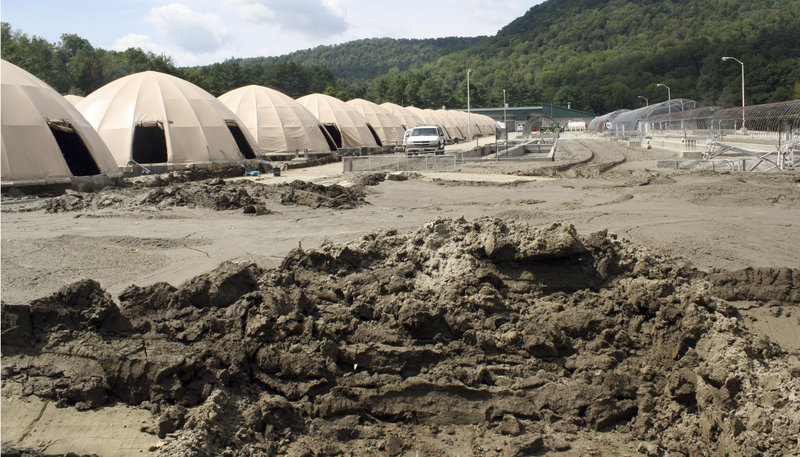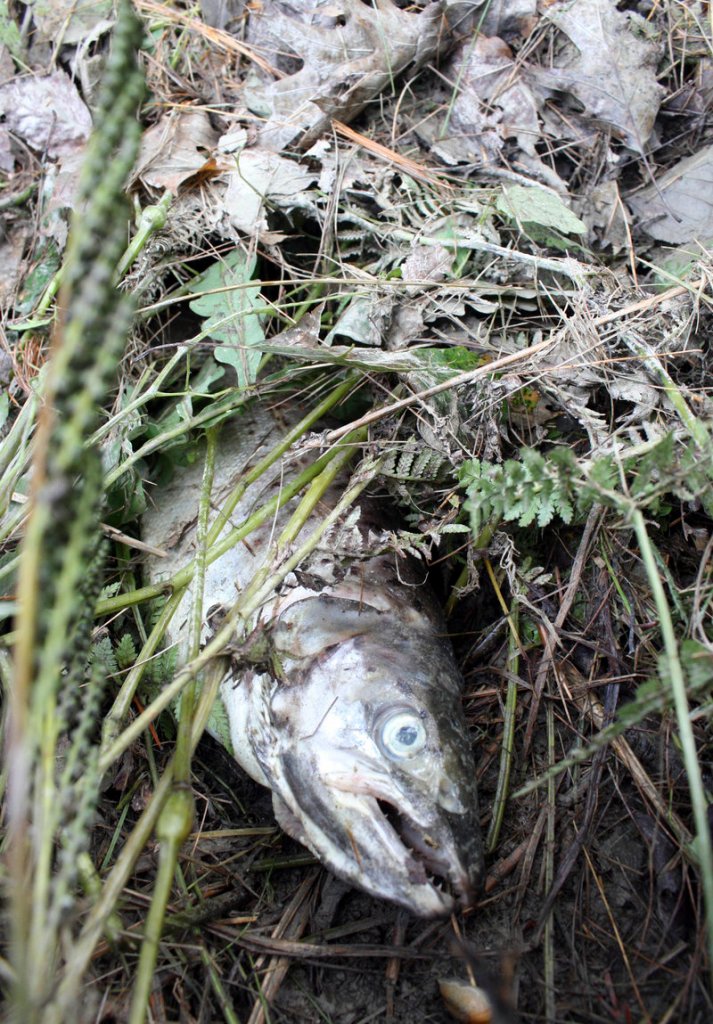MONTPELIER, Vt. — Almost 450,000 lake trout and salmon being raised in the White River National Fish Hatchery in Bethel might have to be destroyed if biologists decide releasing them into the wild could threaten to spread an invasive species of algae into the Great Lakes and Connecticut River basin.
Officials from Vermont, New Hampshire, Massachusetts, Connecticut and the federal government are expected to decide Thursday whether the 13,400 salmon in the Bethel hatchery, including some fish used for brood stock that weigh up to 10 pounds, can be released into waterways along the Connecticut River.
New York is expected to decide next week whether 434,000 lake trout that were supposed to be stocked in lakes Ontario and Erie next year can be stocked this fall or whether those fish should be destroyed as well.
The U.S. Fish and Wildlife Service needs to clean and disinfect the tanks at the White River National Fish Hatchery to be sure no remnants of the algae – known as didymo or rock snot, which can grow into thick mats – remain.
“It would be a horrible thing to get didymo in Lake Ontario,” said Jana Lantry, an aquatic biologist at the New York Department of Environmental Conservation. “We are very concerned. If protecting our lake means getting rid of those fish, it’s unfortunate, but that would be the preferred choice.”
The Fish and Wildlife’s White River Fish Hatchery raises lake trout that are stocked in Ontario and Erie, Atlantic salmon that are released into the Connecticut River basin, and a smaller number of brook trout, which are released into Vermont rivers and streams. The water in the hatchery comes from wells.
On Aug. 28, flooding caused by Irene flooded some of the tanks where the fish are raised and overwhelmed the plumbing, causing even the tanks above the flood waters to be inundated with river water. The flooding left the hatchery covered in silt.
About 10 percent of the hatchery’s fish were either killed or swept into the White River by the flooding.
A quarter of the Atlantic salmon brood stock was killed, including 75 percent of 2-year-old fish and 40 percent of the 3-year-old fish.
Didymo, believed to be spread by anglers who don’t clean their gear when moving among bodies of water, can coat riverbeds with thick mats of yellow-brown vegetation.
It can smother aquatic insect larvae that are favored food for some game fish, such as trout.
The didymo would be spread by the water the fish are transported in and not the fish themselves, said Ken Sprankle, the Fish and Wildlife Service’s Connecticut River coordinator.
Lantry said the 434,000 fish from Vermont destined for Ontario and Erie represent the entire number that were scheduled to be released in those lakes next year by the state of New York.
New York is awaiting the results of tests to determine whether the Vermont fish are free of didymo and can be safely released this fall, about six months earlier than previously planned.
Lantry said she felt the chances of contamination are low and it’s most likely it will be determined the lake trout, about 8 inches long, can be released this fall.
It’s not clear how the fish would fare if they are released earlier than planned, Lantry said. They are currently about 8 inches long.
“It depends on what food is available to them when they get into the lake,” Lantry said.
It’s also unclear on what the impact would be if the fish have to be destroyed. The loss of one year’s worth of stocking could probably be absorbed over time, she said.
“We won’t know what kind of an impact this will have until later,” Lantry said.
The decision on whether to release the Atlantic salmon, which are part of an effort to restore populations of the fish that spend most of their adult lives in the Atlantic Ocean, will be decided Thursday by the Connecticut River Atlantic Salmon Commission, which is made up of representatives from the states along the river and the federal government, Sprankle said.
Didymo has been found in some areas along the river, but not all, Sprankle said.
Send questions/comments to the editors.




Comments are no longer available on this story